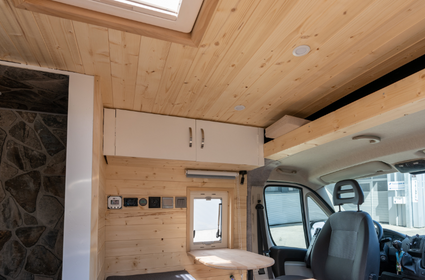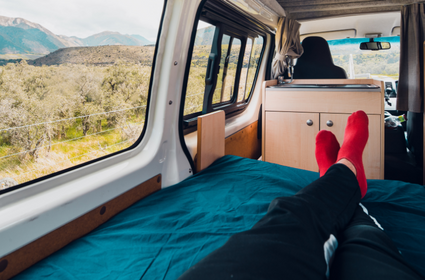Introduction
Embarking on a van build project can be an exciting and rewarding endeavor. However, without proper planning and research, it’s easy to make mistakes that can lead to frustration and costly setbacks. In this article, we will explore the top 10 van build bad ideas to help you avoid common pitfalls and ensure a successful conversion. Whether you’re a first-time builder or looking to improve upon previous projects, these tips will guide you toward a smoother and more efficient van build process.
1. Finalize Your Layout Early
One of the most crucial aspects of a van build is the layout. It’s important to have a clear vision of how you want your space to function before diving into the construction process. By carefully considering and planning the layout, you can ensure that your van will meet your needs and provide a comfortable living space.
Taking the time to visualize your ideal layout will help you make informed decisions and avoid complications down the line. While it may be tempting to start working on other aspects of the build, such as insulation or electrical wiring, it is essential to prioritize the layout first.

Rushing into these other tasks without a finalized layout can result in wasted time, effort, and resources. So, before you start cutting holes in your van or making any major decisions, take the time to carefully plan and visualize your ideal layout. This will set a solid foundation for the rest of your van build journey.
2. Seal Side Strips to Prevent Water Damage
Mercedes Sprinter vans, and many others, have plastic side strips that can be prone to water infiltration. It’s essential to remove these strips during the insulation phase and seal any holes with a waterproof sealant like Sikaflex. Failing to seal these areas can result in water entering your van and causing damage to your insulation and interior.

3. Choose Secure Windows
When adding windows to your van, it’s important to ensure they are securely installed. While it may be tempting to save money by attempting a DIY installation, it’s advisable to hire a professional or seek out reputable campervan specialists. Improperly installed windows can lead to leaks, compromised insulation, and even potential safety hazards.

4. Finish One Job Before Moving to Another
Amid a van build, it can be tempting to juggle multiple tasks simultaneously. However, completing one job is crucial before moving on to the next. For example, if you’re installing carpeting, finish the entire area before moving on to cladding or other tasks. This approach ensures a neater, more efficient build process and avoids unnecessary complications.
5. Monitor Weight Throughout the Build
Weight management is a key consideration in any van build, especially if you need to stay within a specific weight limit. It’s important to consider the weight you’re adding to your van from the early stages of the build. Keep track of the weight of materials, appliances, and personal belongings to avoid exceeding the vehicle’s payload capacity. Regularly weigh your van throughout the build process to avoid any surprises.
6. Avoid Overloading the Flooring
When selecting flooring materials for your van build, it’s important to strike a balance between durability and weight. While heavy-duty vinyl flooring may be appealing for its durability, it can add unnecessary weight to your van. Consider lighter alternatives that still offer the desired level of durability and functionality.
7. Opt for External Water Filler
While stealth camping may be a priority for some van dwellers, it’s important to consider the practicality of certain design choices. For example, mounting the water tank filler on the outside of your van instead of the inside may seem less stealthy, but it offers more convenience and prevents potential issues such as heat loss and water spillage.
8. Use Primer When Painting Doors
When painting the interior of your van, it’s crucial to use a suitable primer, especially when painting doors. Skipping the primer can result in paint peeling and scratching over time. Invest in a metal primer and properly prepare the surface before applying paint for a more durable and professional finish.
9. Simplify Plumbing for Fewer Leaks
Plumbing can be a challenging aspect of a van build, and it’s important to approach it with simplicity in mind. Avoid complex plumbing systems with unnecessary bends and angles, as they can lead to leaks and maintenance issues. Plan your plumbing layout early on and ensure secure connections to minimize the risk of leaks.
10. Consider Fixed beds instead of Benches
While benches that convert into beds may seem like a space-saving solution, they can be more cumbersome and time-consuming than anticipated. Consider opting for a fixed bed layout instead, which eliminates the need for rearranging furniture daily. This allows for better utilization of space and a more comfortable living environment.
Conclusion
By avoiding these van-build bad ideas, you can save yourself time, money, and frustration during your conversion project. Remember to finalize your layout early, seal potential water entry points, choose secure windows, and complete one task before moving on to another. Monitor the weight throughout your build, choose appropriate flooring materials, and consider practicality over stealthiness when it comes to design choices. Use primer when painting doors, simplify plumbing for fewer leaks, and carefully plan your bed layout to maximize space and convenience. With proper planning and attention to detail, your van build can be a successful and enjoyable experience. Happy converting!
*Disclaimer: The information provided in this article is for informational purposes only. Always consult a professional before undertaking any van build project.





